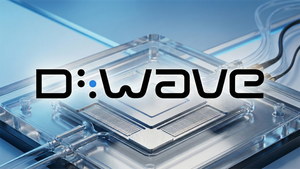Wolters Kluwer Indicator Survey Reveals Persisting Pain Points in Banks’ Risk Management and Regulatory Compliance Efforts
Technology increasingly seen as a means to enhance compliance management systems
While virtually half of respondents continue to express high levels of concern over key risk management and regulatory compliance obligations in the U.S. banking industry, those concerns are lower than in previous years, according to results of the 2024 Regulatory & Risk Management Indicator survey conducted by Wolters Kluwer. The 2024 Indicator Main Score fell from an index level of 119 in the 2023 survey to 99 this year. The 20-point difference more closely reflects 2022 levels and was driven largely by the fact there were fewer major banking regulations introduced compared to 2023, and respondents expressing increased confidence in their ability to manage regulatory challenges.
As in the 2023 survey, complying with the Consumer Financial Protection Bureau’s Small Business Data Collection Rule, known as Section 1071, led the list of key challenges facing banks, credit unions and other lenders, with 69% of respondents citing it as a “high or moderate” concern. Keeping pace with fair lending regulations and new legislation garners considerable attention (61%), along with implementing the new Community Reinvestment Act (CRA) requirements (60%). Managing the ever-evolving landscape of regulatory changes continues as a perennial challenge dominating attention, with 64% of respondents viewing it as an issue of high or moderate concern in 2024.
The survey was conducted between July 8-September 5 garnering 258 respondents from U.S. banks, credit unions and other lending organizations.
“While there have been some encouraging signs in banking this year including the diminished threat of a recession and the Fed’s lowering of interest rates, survey respondents continue to face significant economic and regulatory headwinds,” said Jason Keller, Director, Market Strategy, Compliance Analytics, Wolters Kluwer Compliance Solutions.
“Based on 2024 survey responses, interest rates, while lower, persist at levels that bring enormous challenges to borrowers and lenders alike, while managing regulatory change persistently tops the list of reported concerns in our survey. Despite the industry’s track record in dealing with regulatory changes with a high degree of resilience and flexibility, they are pressures that are unsustainable in the long run,” he explains.
Notably, anxiety over economic factors dropped, with interest rate concerns falling from 74% in 2023 to 53% in 2024; inflation fell from 54% to 48%; and recession dropped from 47% to 37%. Concerns on loan default risk were on par with the prior year at 53%. Concerns over ransomware attacks fell six points to 59% this year, while operational resiliency took on added consideration, moving from 46% to 51%.
Keller points to findings revealing that manual compliance processes—along with having too many competing business priorities—remain the biggest obstacles to maintaining effective compliance programs. “Technology is deemed the most important aspect of automating a regulatory change management program (31%); speed, analysis, and maintaining a regulatory library are each perceived to be relatively equal in importance,” he says.
Manual processes still prevail, reflected by respondents citing its use as “often” (42%) or “sometimes” (31%) in their organizations, although digitization is on the rise both in current practice and as a focus area for anticipated investments in lending processes, automation, and artificial intelligence. The degree to which organizations anticipate acceleration of automation investments climbed to 64% for digital lending (39% high investment, 25% moderate) and automation of regulatory change management systems accounted for 63% (32% high, 31% moderate).
Ian Watson, who heads the global risk practice for Celent, notes the considerable investments banking firms are making in the regulatory change management space. “The Wolters Kluwer Indicator confirms that while firms have shown increased confidence in their ability to keep track of regulatory changes, the overall challenge of managing regulatory changes remains a dominant concern,” says Watson. “To cope with this challenge, banks are increasingly investing in data, analytics and AI to increase their capabilities in this arena.”
Anticipated spending on compliance management systems rebounded from 2022 survey levels in most areas, with management of regulatory content remaining as the top investment area cited by 56% among various CMS elements, followed by updating policies and procedures (50%) and improving quality assurance capabilities (47%).
Organizations with an integrated Enterprise Risk Management (ERM) plan—or at least with a defined plan but inconsistent integration—continue to slowly trend upward; almost 1 in 3 continue to manage risks without a formal program. Top risks assigned for escalated priority include cybersecurity threats (59%) followed by compliance risks at 41% and credit risk at 40%.
Most respondents perceive regulators’ overall scrutiny of fair lending practices to have remained the same or increased over the past year (33% and 43%, respectively, whereas 4% view a slight or considerable decrease), and the remaining 20% are unsure of examiners’ scrutiny. Finally, skepticism remains high over a likely reduction in regulatory burdens, with 61% citing reductions as somewhat (28%) or very (33%) unlikely. Technology-driven solutions—led by workflow automation and e-sign—will be crucial to addressing these burdens.
For more information about Wolters Kluwer, please visit: www.wolterskluwer.com.
About Wolters Kluwer
Wolters Kluwer (EURONEXT: WKL) is a global leader in information, software solutions and services for professionals in healthcare; tax and accounting; financial and corporate compliance; legal and regulatory; corporate performance and ESG. We help our customers make critical decisions every day by providing expert solutions that combine deep domain knowledge with technology and services.
Wolters Kluwer reported 2023 annual revenues of €5.6 billion. The group serves customers in over 180 countries, maintains operations in over 40 countries, and employs approximately 21,400 people worldwide. The company is headquartered in Alphen aan den Rijn, the Netherlands.
For more information, visit www.wolterskluwer.com, follow us on LinkedIn, Facebook, YouTube and Instagram.
View source version on businesswire.com: https://www.businesswire.com/news/home/20241217116930/en/
Contacts
David Feider
Associate Director, External Communications
Financial & Corporate Compliance
Wolters Kluwer
Office +1 612-246-9454
david.feider@wolterskluwer.com
More News
View More




Recent Quotes
View MoreQuotes delayed at least 20 minutes.
By accessing this page, you agree to the Privacy Policy and Terms Of Service.